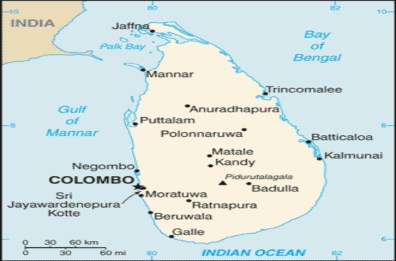Map 2.7: Sri Lanka

Map Source: https://www.cia.gov/library/publications/the-world-factbook/geos/ce.html
♤ In 1987 India-Sri Lanka Agreement signed between Prime Minister Rajiv Gandhi and President J.R. Jayewardene sought to end the civil war in the island nation.
♤ This agreement envisaged the creation of provincial councils with autonomy enabled by the 13th amendment to the Sri Lankan constitution.
♤ Also under the agreement, Indian Peace Keeping Force (IPKF) was sent to Sri Lanka's Northern and Eastern provinces, to “guarantee and enforce the cessation of hostilities” between the Tamil separatist groups and the government.
♤ However, the situation turned into a military confrontation between the IPKF and the Liberation Tigers of Tamil Eelam (LTTE), which refused to disarm and join the political mainstream.
♤ The IPKF-LTTE conflict that began on October 10, 1987, and lasted till 1990 saw the death of over 1,200 Indian soldiers and 660 LTTE cadres.
♤ The assassination of former prime minister Rajiv Gandhi in 1991 further changed India’s
attitude towards the ethnic conflict in Sri Lanka
